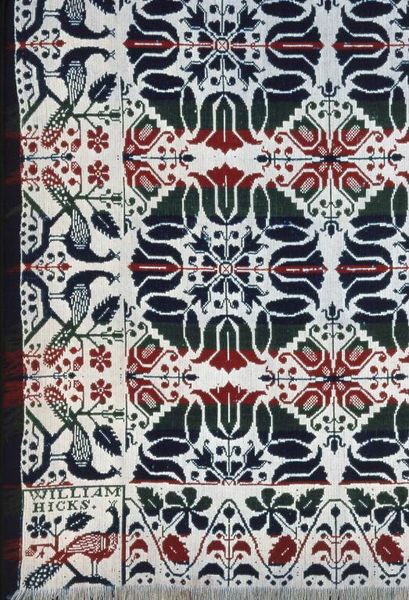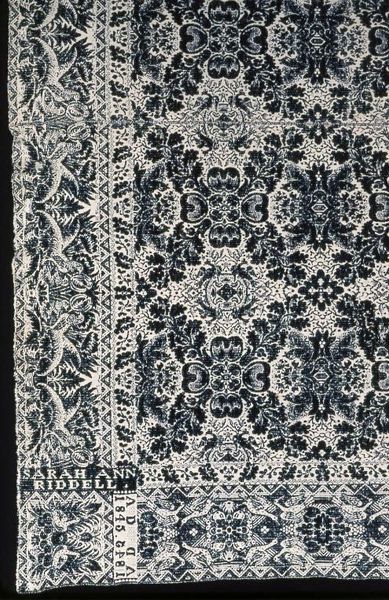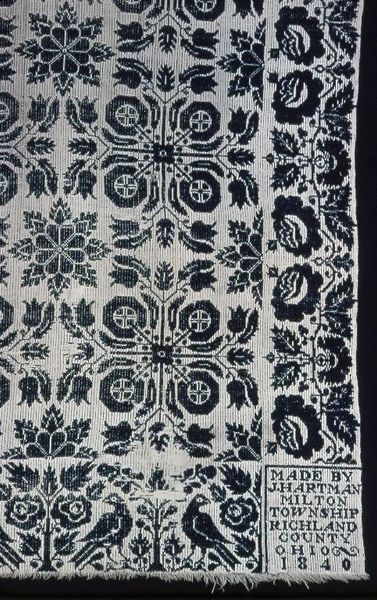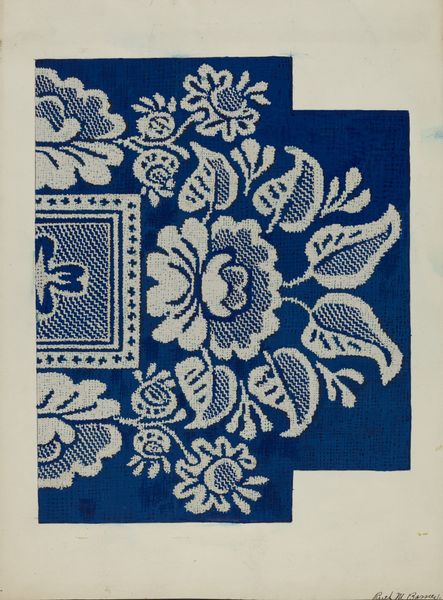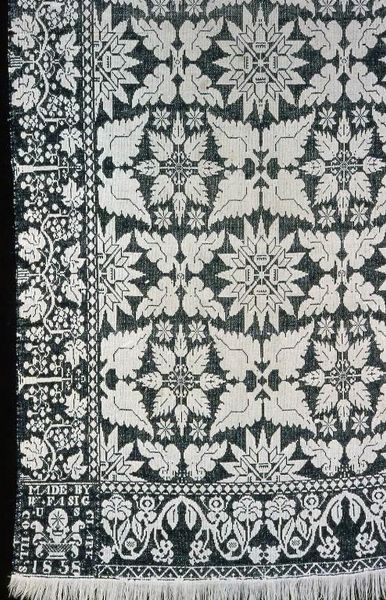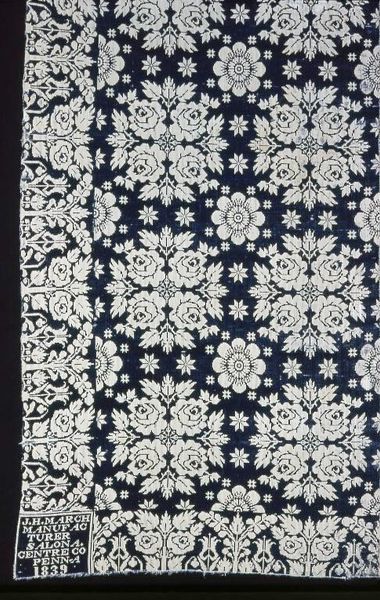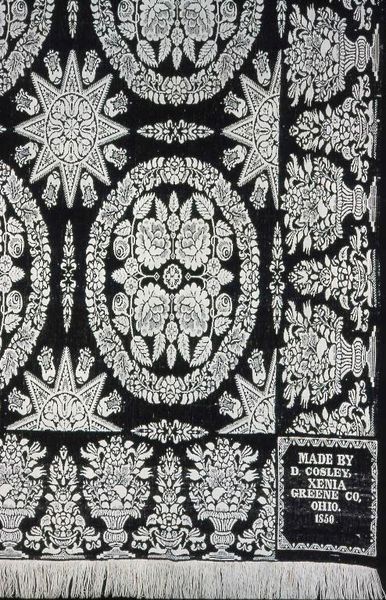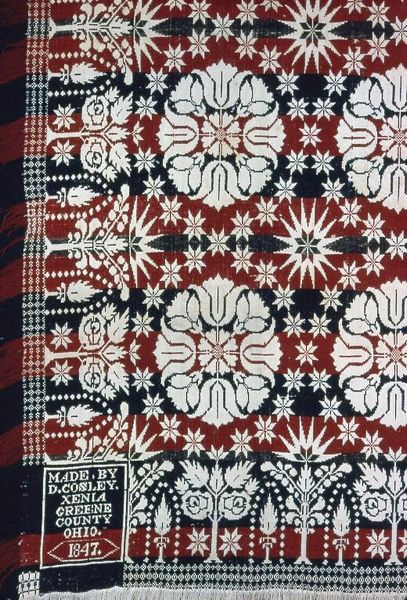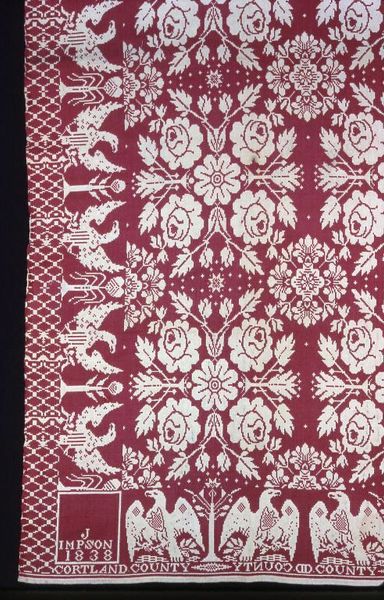
fibre-art, weaving, textile
#
fibre-art
#
weaving
#
textile
#
geometric
#
intricate pattern
#
pattern repetition
#
decorative-art
Dimensions: 227.5 × 204 cm (89 3/4 × 80 1/4 in.) Repeat: 48.75 × 37 cm (19 1/4 × 14 1/2 in.)
Copyright: Public Domain
Curator: The "Coverlet," woven in 1842 by Samuel Meily, offers a rich tableau of early American textile artistry, a magnificent feat of craftsmanship made with wool. It’s currently held here at The Art Institute of Chicago. What’s your initial take? Editor: My first impression is of its commanding presence, a tactile surface dense with pattern and the maker's labor. The contrasting hues give the material an incredible texture. You can almost feel the weave. Curator: Precisely! This textile tradition situates women centrally, doesn't it? Examining textile work through a feminist lens reveals the artistic contributions of women, whose art often was marginalized to the domestic sphere, like quilts and samplers. Here we have both Meily, and Lucina Carpenter cited. This tells me collaboration, skill sharing and perhaps different modes of production are intersecting in this textile work. Editor: Absolutely. Weaving wasn’t just "women's work." The details, though! Notice the inscription—it not only names Meily and Carpenter but also references "Mansfield, Richland, Ohio," situating the labor and its materials within a specific local economy and the conditions of wool production at that time. It suggests connections to a specific place and history through industry. Curator: It’s impossible to ignore the repetitive floral motifs and geometric grids. The cultural narratives communicated are also so striking. This coverlet signifies order and control. Editor: Beyond the decorative, this object invites us to consider the lived experiences tied to its production. Each thread speaks of material choices, economic realities, and skilled execution—a narrative deeply woven into the very fabric of this piece. What a powerful artifact. Curator: Precisely. Viewing it through an intersectional lens enriches our perception of art and maker. Editor: Yes, shifting the focus to what this textile reveals about materials and craft changes how we understand art history.
Comments
No comments
Be the first to comment and join the conversation on the ultimate creative platform.

